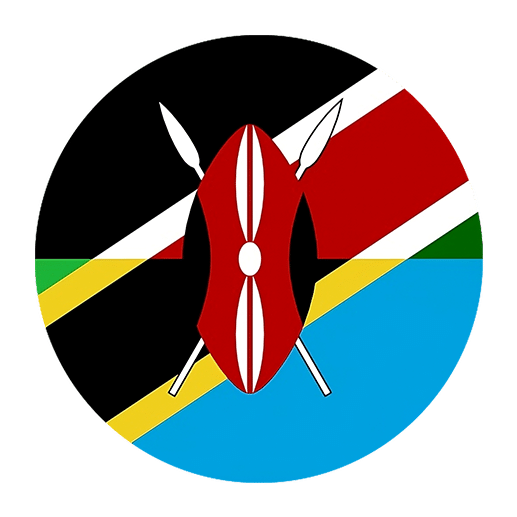The Swahili language, known as Kiswahili in its native context, is a fascinating and rich linguistic tapestry woven from various historical, cultural, and geographical threads. As one of the most widely spoken languages in Africa, Swahili serves as a lingua franca across many East African nations, including Kenya, Tanzania, Uganda, and parts of the Democratic Republic of Congo. Understanding the history and origins of Swahili not only offers insights into the language itself but also provides a window into the complex history of East Africa.
Origins of the Swahili Language
The roots of the Swahili language can be traced back to the Bantu-speaking peoples who migrated to the East African coast around the first millennium AD. The Bantu languages are a large group of languages spoken predominantly in Central, East, and Southern Africa. As these Bantu-speaking groups settled along the coast, they began to interact with Arab, Persian, Indian, and later European traders and settlers who frequented the region.
Bantu Foundations
The core structure and vocabulary of Swahili are deeply rooted in the Bantu languages. Bantu languages are characterized by their use of noun classes, a system that categorizes nouns based on their semantic properties, and their agglutinative nature, which means they often form words by combining smaller morphemes in a linear sequence. These linguistic features are evident in Swahili and form the backbone of its grammatical structure.
Influence of Arabic
One of the most significant external influences on the Swahili language comes from Arabic. The arrival of Arab traders on the East African coast, beginning around the 7th century AD, brought about extensive cultural and linguistic exchange. The Swahili coast became a hub for trade and interaction between Africa and the Arab world.
Arabic contributed a substantial number of loanwords to Swahili, particularly in areas related to trade, religion, administration, and daily life. For instance, the Swahili word “kitabu” (book) comes from the Arabic “kitab,” and “salaam” (peace) comes from the Arabic “salaam.” The influence of Arabic is also evident in Swahili’s script; traditionally, Swahili was written in the Arabic script until the advent of European colonization, when the Latin alphabet became more prevalent.
Persian and Indian Influences
Persian traders and settlers also left their mark on the Swahili language. The Persian influence is less extensive than that of Arabic but still notable. This influence is primarily seen in vocabulary related to trade and navigation. For example, the Swahili word “bandari” (port) has Persian origins.
Indian influence, particularly from Gujarati and Hindi speakers, is another significant aspect of Swahili’s development. Indian traders and settlers, who arrived on the East African coast during the medieval period, brought with them words and cultural practices that were absorbed into the Swahili language and culture.
Swahili as a Lingua Franca
Swahili’s role as a lingua franca in East Africa is one of its most defining features. A lingua franca is a language that is used as a common means of communication between speakers of different native languages. Swahili’s rise to this position was facilitated by several factors, including its geographical spread, cultural significance, and the historical context of trade and colonization.
Geographical Spread
The East African coast, with its numerous islands and ports, provided a natural environment for the spread of Swahili. From southern Somalia to northern Mozambique, Swahili-speaking communities emerged as key players in regional trade networks. The language’s reach extended inland through river systems and trade routes, bringing Swahili into contact with a diverse array of African languages and cultures.
Cultural Significance
Swahili culture, with its rich traditions in literature, music, and oral storytelling, played a crucial role in the language’s spread. Swahili poetry, known as “mashairi,” and the traditional narrative art form of “hadithi” (stories) have been essential in preserving and promoting the language. Swahili literature, both oral and written, has been a vehicle for cultural expression and identity, further solidifying the language’s importance in the region.
Colonial and Post-Colonial Periods
The colonial period, particularly under German and British rule, had a profound impact on the status and spread of Swahili. Both colonial powers recognized the utility of Swahili as a means of administration and communication in their East African territories. The Germans, who controlled Tanganyika (modern-day Tanzania) and parts of Kenya, used Swahili in education and governance, helping to standardize the language.
Under British rule, Swahili continued to serve as a bridge language in Kenya and Uganda. The language’s use in education, media, and government was further institutionalized, laying the groundwork for its post-colonial role.
In the post-colonial period, newly independent nations like Tanzania and Kenya embraced Swahili as a national language. In Tanzania, Swahili was promoted as a unifying language to foster national identity and unity among the country’s diverse ethnic groups. The Tanzanian government implemented Swahili as the medium of instruction in primary schools and as a national language in official domains, ensuring its continued relevance and spread.
Swahili in the Modern Era
Today, Swahili continues to be a vital and dynamic language, spoken by millions of people across East Africa and beyond. Its role as a lingua franca remains strong, and it is increasingly recognized on the global stage.
Education and Media
Swahili is widely used in education, media, and government in East Africa. In Tanzania, for example, Swahili is the medium of instruction in primary schools, and it is taught as a subject in secondary schools and universities. In Kenya and Uganda, Swahili is also part of the school curriculum and is used in various official capacities.
The media landscape in East Africa is rich with Swahili content. Radio and television stations broadcast in Swahili, and newspapers and online platforms offer news and entertainment in the language. Swahili music, particularly genres like Bongo Flava and Taarab, enjoys immense popularity and contributes to the language’s cultural vibrancy.
Global Recognition
Swahili’s significance extends beyond the African continent. It is one of the working languages of the African Union and the East African Community. Internationally, Swahili is taught in universities and language institutes around the world. The language’s global recognition is a testament to its cultural and historical importance.
Challenges and Opportunities
Despite its prominence, Swahili faces challenges in the modern era. The dominance of global languages like English and French in international business, technology, and academia can overshadow local languages like Swahili. However, there are concerted efforts to promote and preserve Swahili. Organizations, governments, and cultural institutions continue to support initiatives that encourage the use and study of Swahili.
The rise of digital technology presents new opportunities for Swahili. Online platforms, social media, and mobile applications offer innovative ways to learn and use the language. The creation of Swahili content for the digital age ensures that the language remains relevant and accessible to younger generations.
The Cultural Heritage of Swahili
Swahili is not just a language; it is a repository of cultural heritage. The language embodies a rich history of interactions between diverse peoples and cultures. Swahili culture is a blend of African, Arab, Persian, Indian, and European influences, reflecting the region’s historical connections.
Swahili Literature
Swahili literature has a long and illustrious history. Traditional Swahili poetry, known as “utendi” or “mashairi,” is characterized by its intricate rhyme schemes and thematic depth. These poems often explore themes of love, morality, religion, and social issues. One of the most famous Swahili poets is Al-Inkishafi, whose work “Utendi wa Mwana Kupona” is a classic example of Swahili poetic tradition.
In addition to poetry, Swahili prose literature has flourished over the centuries. The “hadithi” (stories) form an essential part of Swahili oral literature, conveying moral lessons and cultural values. Modern Swahili literature has also made significant strides, with authors like Shaaban Robert and Euphrase Kezilahabi contributing to the literary canon.
Swahili Music and Dance
Music and dance are integral to Swahili culture. The traditional Taarab music, which blends African, Arab, and Indian musical elements, is a cornerstone of Swahili cultural expression. Taarab performances often feature poetic lyrics sung in Swahili, accompanied by instruments like the oud, qanun, and violin.
Contemporary Swahili music genres like Bongo Flava have gained popularity among younger audiences. Bongo Flava, a fusion of hip hop, R&B, and traditional Tanzanian music, is characterized by its energetic beats and socially conscious lyrics. Artists like Diamond Platnumz and Ali Kiba are prominent figures in the Bongo Flava scene, contributing to the genre’s global reach.
Swahili Cuisine
Swahili cuisine is a delightful fusion of flavors and culinary traditions. The coastal regions of East Africa have a rich culinary heritage that reflects the diverse influences of Arab, Indian, and African cooking. Dishes like “pilau” (spiced rice), “biryani,” and “samosas” are popular staples of Swahili cuisine.
Coconut milk is a common ingredient in many Swahili dishes, adding a distinct flavor to curries, stews, and desserts. The use of spices like cloves, cardamom, and cinnamon is also characteristic of Swahili cooking. Street food culture is vibrant in Swahili-speaking regions, with vendors offering delicacies like “mishkaki” (skewered meat) and “mandazi” (fried doughnuts).
Preserving and Promoting Swahili
The preservation and promotion of the Swahili language and culture are crucial for maintaining its historical and cultural significance. Efforts to support Swahili include educational programs, cultural festivals, and language revitalization initiatives.
Educational Programs
Educational programs play a vital role in promoting Swahili. Schools and universities in East Africa incorporate Swahili into their curricula, ensuring that students learn the language from an early age. Language courses and study programs are also available internationally, allowing learners from around the world to study Swahili.
Cultural Festivals
Cultural festivals celebrate Swahili heritage and provide a platform for showcasing the language, music, dance, and cuisine. Events like the Zanzibar International Film Festival (ZIFF) and the Mombasa Carnival attract visitors from across the globe, offering a unique opportunity to experience Swahili culture firsthand.
Language Revitalization Initiatives
Language revitalization initiatives aim to preserve and promote Swahili in the face of globalization. Organizations like the East African Kiswahili Commission work to standardize and promote the use of Swahili across the region. Digital tools and resources, such as language learning apps and online dictionaries, also contribute to the language’s revitalization.
Conclusion
The history and origins of the Swahili language are a testament to the rich cultural tapestry of East Africa. From its Bantu roots to its interactions with Arab, Persian, Indian, and European influences, Swahili has evolved into a dynamic and vibrant language. Its role as a lingua franca, its cultural significance, and its global recognition underscore its importance in the modern world.
As we celebrate Swahili, it is essential to continue efforts to preserve and promote the language and its cultural heritage. By doing so, we ensure that future generations can appreciate and contribute to the rich legacy of Swahili.

